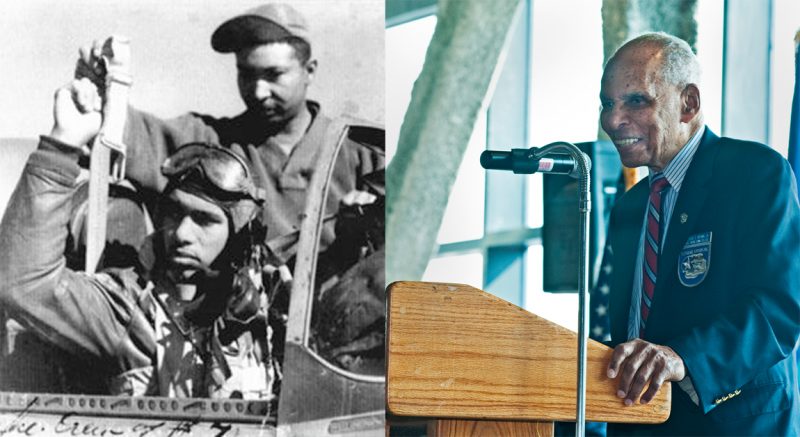Dr. Roscoe C. Brown, Jr. flew with the Tuskegee Airmen in World War II. He recently passed away at the age of 94. He broke his hip in a fall and died in the hospital, according to his granddaughter, Lis Bodie.
The mayor of New York City, Bill de Blasio, ordered all flags in the city be flown at half-mast until Saturday in honor of the famous resident. Brown flew 68 combat missions with the Airmen, the first African-American pilots in the history of the U.S.
“Fighter pilots are like athletes. And I was a pretty good pilot,” said Brown, who ran the New York City Marathon nine times.
Brown was one of six Airmen who received the Congressional Gold Medal on behalf of the Tuskegee Airmen. They were awarded the honor by Congress and President George W. Bush for fighting for their country while fighting discrimination at the same time.
Brown had his PH.D. in Education. He served as the president of Bronx Community College for 17 years. Later, he was a professor and director of the Center for Urban Education Policy at the CUNY Graduate Center. He was the host of a public affairs show on CUNY TV called “African American Legends.”
He received a pacemaker at Montefiore Medical Center after falling ill in the winter. He only made it as long as he did because of his good health and physical conditioning, according to his physician, Dr. Daniel Sims. “Most 94-year-olds are not this active, but Dr. Brown is just remarkable,” he said.
But Brown admitted back in May that as he got older, “I tried to do a lot more than my body would accept.”
On March 15, 1945, Brown flew 1500 miles from southern Italy to Berlin. It was the longest mission flown by the Air Force in World War II. They took on a group of German jets, and Brown was able to shoot one down before heading home and buzzing their home base. “I was a kid, 23 years old,” Brown remembered. “And we were, like all pilots, a fun-loving, happy-go-lucky group.”
There were nearly 1000 fighter pilots trained in the Tuskegee, Alabama air base. They were not allowed to work with the white pilots, either to practice or to fight. The Tuskegee Airmen took to painting the tails of their planes red. As a result, they came to be known as the Red Tails. A 2012 movie by that name tells their story. Brown was an adviser to that film.
“Young people don’t totally understand,” Brown said in 2011. “I didn’t understand the brutality of the Civil War but when I was a Tuskegee Airman, I knew that I was good, I knew that I had to challenge the system, and I loved to fly.”
“My message to young people is to keep on working,” he said. “You’ve got to be better, you’ve got to be disciplined, you’ve gotta believe. And if you believe you can overcome, you can overcome. That’s the story of the Tuskegee Airmen.”
